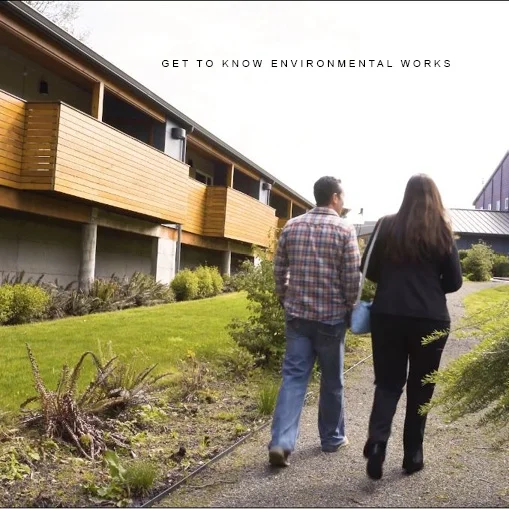In this issue we share our new video and recent social media highlights. We are also shining a light on community action agencies, the amazing anti-poverty organizations that partner with low-income individuals to design and provide the services they need to succeed.
Environmental Works’ New Video
We premiered our new video (available at the link above or here) at our Community Design Chat and Appetizer Hour on September 28. Thanks to all our clients and partners who made this project possible, including Curtis Brown of The Brighton Apartments, Annette Bryan of the Puyallup Tribal Council, Sili Sauvasa and Julia Bautista of White Center Community Development Association, Mark Okazaki of Neighborhood House, and Playfish Media.
Spotlight on Community Action Agencies
A product of the War on Poverty, community action agencies (CAAs) were formed by the 1964 federal Economic Opportunity Act so local communities would be able to make their own decisions about how to best promote low-income individuals’ self-sufficiency. In addition to self-sufficiency, CAAs’ goals include improved living conditions for low-income individuals, ownership of a stake in the community, and stronger families and supportive systems.
CAAs rely on a collaborative design model, making them the “community design centers” of the anti-poverty services world. They are legally required to have tripartite boards of directors, with a third of the members low-income individuals, a third public officials, and a third people from the private sector.
CAAs provide direct anti-poverty services such as job retraining and support, food banks, early childhood education, energy assistance, and affordable housing, all grounded in community needs assessments and collaborative decision-making. There are more than 1,000 CAAs nationally, with 30 serving people in Washington State. Washington CAAs include several EW clients, such as Neighborhood House, El Centro de la Raza, Hopelink, Solid Ground, Community Action Center in Pullman, and Opportunity Council in Bellingham.
CAAs nationally serve more than a quarter of all Americans living in poverty, and millions more just above the poverty line. In 2015, thanks to CAAs, 6 million people with low incomes obtained employment support that enabled them to acquire a job, increase their income, achieve living wage employment and benefits, and/or reduce or eliminate employment barriers. Another 4.6 million babies, children, and adult family members participated in developmental and enrichment programs such as Head Start and home visiting programs, which help prepare children to succeed in school and families to sustain strong relationships. Millions more learned financial literacy skills; obtained emergency assistance to maintain their stability and housing; and received support to make their homes more energy-efficient, reducing their utility expenses.
Combined with other policies and supports, CAAs make a difference. The U.S. poverty rate in 2016 was 12.7%, down 0.8% from 2015, reflecting the second consecutive annual decline in poverty. This means that 2.5 million fewer people lived in poverty in 2016 than in 2015, and 6 million fewer than in 2014. See the U.S. Census Bureau’s just-released “Income and Poverty in the United States: 2016” for more detail on U.S. poverty trends and demographics.
CAAs receive funding through several federal programs, including Community Services Block Grants ($715 million per year), the Low-Income Home Energy Assistance Program (support for senior citizens and low-income individuals to pay their heating and power bills; $3.39 billion per year), and the Weatherization Assistance Program (support for homeowners to make their homes more energy-efficient; $121 million per year). President Trump’s proposed 2018 budget would slash funding for all three of these programs to $0.
What can you do to support anti-poverty programs in your community? First, look up your local CAA here, and consider donating time or money to support their mission. CAAs depend heavily on local support, including volunteer time, and leverage $7.70 for every dollar they receive from Community Services Block Grants. Second, stay informed on plans for block grants in federal budget proposals, and consider contacting your representatives with your input. The non-partisan Center on Budget and Policy Priorities’ blog publishes several posts per week on how proposed policies would affect poverty. The Congressional Budget Office also publishes frequent updates on the anticipated impact of budget proposals.
In Case You Missed It
Ethiopian Community in Seattle Charrette
EW Celebrates National Community Design Day
EW Women’s Power Pose Photo Featured at Seattle Design Festival

